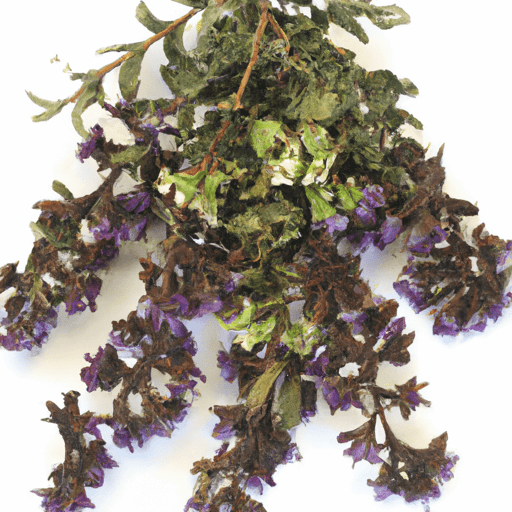The Versatile Bouquet Garni: Enhancing Flavors in Your Cooking
If you’ve ever wondered how masterful chefs effortlessly infuse their dishes with enchanting flavors, the secret may lie in a humble little bundle of herbs called the bouquet garni. Packed with aromatic herbs and spices, this classic ingredient adds depth and character to dishes, elevating them to new culinary heights. In this blog post, we’ll delve into the world of bouquet garni, exploring its taste, common uses in cooking, nutritional value, and uncovering some interesting historical facts along the way.
Understanding the Bouquet Garni
The term “bouquet garni” translates from French as “garnished bouquet,” which perfectly describes its appearance. Composed of a flavorful assortment of fresh herbs, such as thyme, parsley, and bay leaves, bouquet garni is typically tied together with kitchen twine, making it easy to remove from dishes once it has imparted its aromatic magic.
Unleashing a Symphony of Flavors
Bouquet garni acts as a fantastic flavor enhancer, infusing savory dishes with its unique taste profile. The combination of herbs, chosen for their complementary flavors, creates a harmonious symphony that tantalizes the palate. The earthiness of thyme, freshness of parsley, and subtle bitterness of bay leaves work together to elevate the overall taste experience.
The Culinary Companion
Versatility is one of the key attributes of bouquet garni. Its applications are not bound by any specific cuisine, making it a prized asset in kitchens across the globe. This powerhouse ingredient finds its way into an array of dishes, ranging from stews, soups, and stocks to hearty braises and even sauces. Whether you’re cooking up a hearty beef bourguignon or simmering a delicate vegetable soup, bouquet garni effortlessly imparts its flavors, transforming ordinary dishes into extraordinary ones.
Nutritional Delights
While bouquet garni may be cherished for its taste, it also offers some nutritional benefits. The herbs commonly found in these little bundles pack a mighty punch of antioxidants, vitamins, and minerals. Thyme, for example, boasts antimicrobial properties, while parsley is a rich source of vitamin K and vitamin C. Bay leaves, on the other hand, contain compounds believed to have anti-inflammatory effects. So not only does bouquet garni enhance the taste of your dishes, but it also contributes a hint of goodness to your diet.
A Trip Through History
To truly appreciate the bouquet garni, we journey back in time to where it first emerged. French cuisine is often credited for perfecting this culinary technique, but its roots trace back to ancient Greece and Rome, where herbal bundles were used in medicinal preparations. Over the centuries, bouquet garni evolved from a medicinal remedy to become an indispensable culinary tool, enhancing dishes throughout Europe and beyond.
Unleash the Magic of Bouquet Garni in Your Kitchen
Now that you’re armed with the knowledge of bouquet garni’s flavor, versatility, nutritional value, and history, it’s time to embrace this magical ingredient in your own kitchen. Experiment with different combinations of herbs, tailoring them to suit the flavors of your favorite dishes. Whether you’re a novice cook or an experienced culinary enthusiast, the bouquet garni is a humble hero that can elevate your cooking to extraordinary heights.
So the next time you embark on a culinary adventure, remember to tie up a little bundle of herbs and let the bouquet garni work its enchantment in your dishes. Happy cooking!
Note: It’s important to remember to remove the bouquet garni before serving your dish to avoid biting into any woody stems or inedible parts of the herbs.
Bouquet Garni
Origin: Bouquet garni is a bundle of herbs used in French cuisine to flavor soups, stocks, stews, and sauces. It originated in France and has been used since the Middle Ages.
Composition: Traditionally, a bouquet garni consists of three main herbs bound together using a string or wrapped in a cheesecloth. The classic combination includes fresh sprigs of parsley, thyme, and a bay leaf. However, variations may include other herbs like rosemary, sage, marjoram, or savory.
Usage: The bouquet garni is placed in a pot or tied to the handle of a cooking vessel and simmered with the dish to infuse it with flavor. After cooking, the bundle is removed before serving.
Flavor Enhancement: The combination of herbs used in a bouquet garni imparts delicate and aromatic flavors to dishes. Parsley adds a fresh, grassy note, thyme contributes earthy and slightly minty flavors, while bay leaf offers a subtly bitter and floral taste.
Nutritional Benefits: Although the bouquet garni itself is not consumed, the herbs in it can provide nutritional benefits. Parsley contains vitamins A, C, and K, thyme is a good source of vitamin C, and bay leaf contains essential oils that have antioxidant and anti-inflammatory properties.
Unique Properties: Bouquet garni adds depth and complexity to a dish without overpowering other flavors. It brings harmony to the overall taste profile and can be easily customized by changing the herb combination to suit different recipes.
Historical Significance: Bouquet garni has been widely used in traditional French cuisine for centuries and is considered a staple in cooking. Its presence in many classic French dishes reflects its historical significance and enduring popularity in culinary practices.




Use the share button below if you liked it.
It makes me smile, when I see it.